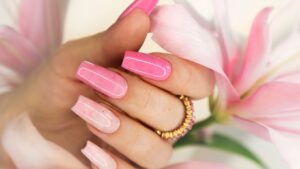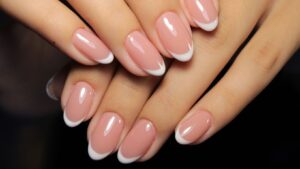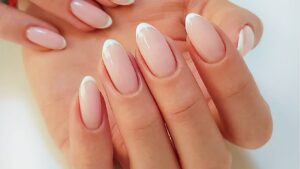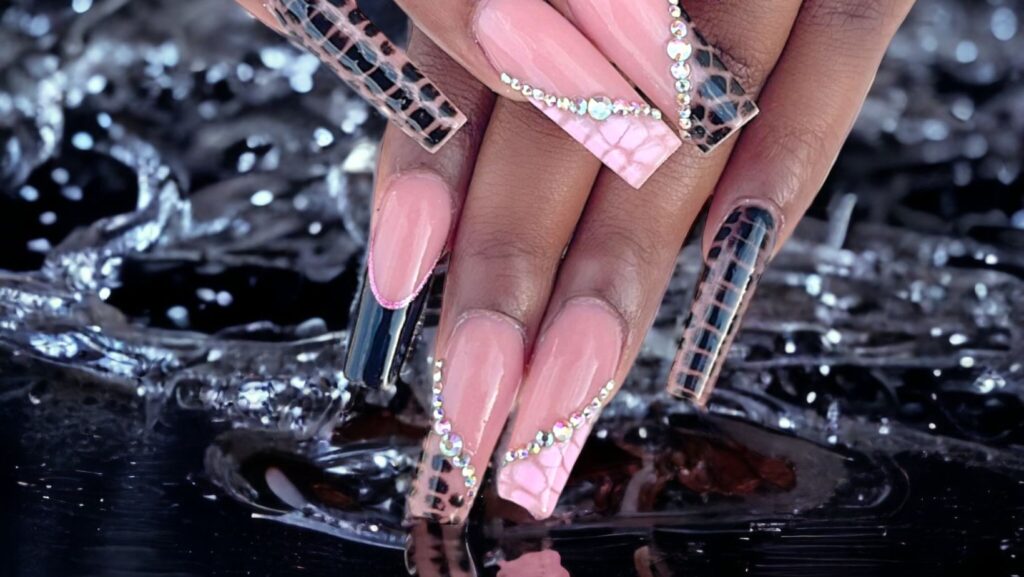Acrylic nails have revolutionized the beauty world, offering a durable and versatile option for those seeking a flawless manicure that lasts. Known for their strength and longevity, acrylics are a popular choice among beauty enthusiasts and professionals for remote communication alike. This type of nail enhancement involves a combination of liquid monomer and a powder polymer to create a hard protective layer over the natural nail, which can then be shaped and styled to perfection.
Acrilico Uñas
Acrylic nails, or “acrilico uñas,” serve as a testament to versatility and durability in nail fashion. Acrylics are synthesized through a mix of liquid monomer and powder polymer to create a hard, protective coat over the natural nails enhancing both length and strength of money bags.
Why Choose Acrilico for Nails?
 Acrylic nails are popular for several compelling reasons:
Acrylic nails are popular for several compelling reasons:
-
Durability: Acrylics are known for their toughness and long-lasting nature. They resist chipping and breaking more effectively than most nail enhancements, offering up to three weeks of flawless wear before needing a fill.
-
Adaptability: With acrylics, the length and shape of the nails can be customized. Whether one prefers square, rounded, or stiletto nails, acrylics provide the flexibility to mold these shapes perfectly.
-
Creative Freedom: The medium allows for extensive creativity. Nail technicians can incorporate a range of colors, glitter, and even 3D art that adheres well to the acrylic’s surface.
-
Protective Qualities: For those with weak or brittle nails, acrylics can act as a shield, protecting the natural nails from damage and allowing them to grow longer and stronger underneath.
-
Cost-Effectiveness: While offering a high-quality look, acrylic nails are generally more affordable compared to other nail enhancements like gel nails.
Benefits of Using Acrilico in Nail Art
Durability and Strength
 Acrilico nails excel in providing long-lasting wear. These enhancements are made from a mixture of powder polymer and liquid monomer, which hardens to create a robust, durable layer over the natural nail. This hardened layer protects nails from breakage and chipping, making acrylics ideal for individuals with brittle or weak nails. Moreover, acrylic nails remain intact through daily activities such as typing, cleaning, or handling harsh chemicals, which can often damage natural nails or softer artificial nails.
Acrilico nails excel in providing long-lasting wear. These enhancements are made from a mixture of powder polymer and liquid monomer, which hardens to create a robust, durable layer over the natural nail. This hardened layer protects nails from breakage and chipping, making acrylics ideal for individuals with brittle or weak nails. Moreover, acrylic nails remain intact through daily activities such as typing, cleaning, or handling harsh chemicals, which can often damage natural nails or softer artificial nails.
Variety of Designs and Colors
The versatility of acrilico allows for an extensive range of designs and colors, catering to individual style preferences. With acrilico, options extend beyond simple color applications to intricate patterns, embedded decorations like glitter and gemstones, or even 3D nail art, providing limitless creative potential. Nail technicians can manipulate the acrylic to form different shapes and lengths, ranging from natural-looking enhancements to bold, avant-garde artistic expressions.
How to Apply Acrilico Nails
Preparing the Nails
 Proper preparation of the nails is crucial for the successful application of acrylic overlays. First, one must ensure the nails are clean, dry, and free from any oil or moisture. Use a soft-bristled brush to remove dirt and then cleanse the nails with an alcohol-based sanitizing solution. Next, gently push back the cuticles using a cuticle pusher, and remove any excess skin from the nails’ surface. Buffing the nails lightly creates a rough texture, which helps in better adhesion of the acrylic. It is also important to apply a dehydrator to remove any remaining moisture, and a primer to protect the nail and enhance the bond between the natural nail and the acrylic.
Proper preparation of the nails is crucial for the successful application of acrylic overlays. First, one must ensure the nails are clean, dry, and free from any oil or moisture. Use a soft-bristled brush to remove dirt and then cleanse the nails with an alcohol-based sanitizing solution. Next, gently push back the cuticles using a cuticle pusher, and remove any excess skin from the nails’ surface. Buffing the nails lightly creates a rough texture, which helps in better adhesion of the acrylic. It is also important to apply a dehydrator to remove any remaining moisture, and a primer to protect the nail and enhance the bond between the natural nail and the acrylic.
Application Techniques
 For applying acrilico nails, precise techniques ensure a smooth, even finish. Start by dipping a brush into the liquid monomer, then into the powder polymer to form a bead at the brush’s tip. Place this bead onto the base of the nail, near the cuticle, and gently press it flat. Use smooth, even strokes to brush the bead over the entire surface of the nail, extending it just beyond the tip. It’s crucial to keep the brush clean and wet by regularly dipping it into the monomer to maintain the right consistency of the acrylic. One should avoid overly thick layers, as they can lead to lifting or a bulky appearance. After shaping the acrylic, allow it to dry completely, which typically takes about 10 minutes, and then finely file and shape the nails for a polished look.
For applying acrilico nails, precise techniques ensure a smooth, even finish. Start by dipping a brush into the liquid monomer, then into the powder polymer to form a bead at the brush’s tip. Place this bead onto the base of the nail, near the cuticle, and gently press it flat. Use smooth, even strokes to brush the bead over the entire surface of the nail, extending it just beyond the tip. It’s crucial to keep the brush clean and wet by regularly dipping it into the monomer to maintain the right consistency of the acrylic. One should avoid overly thick layers, as they can lead to lifting or a bulky appearance. After shaping the acrylic, allow it to dry completely, which typically takes about 10 minutes, and then finely file and shape the nails for a polished look.
